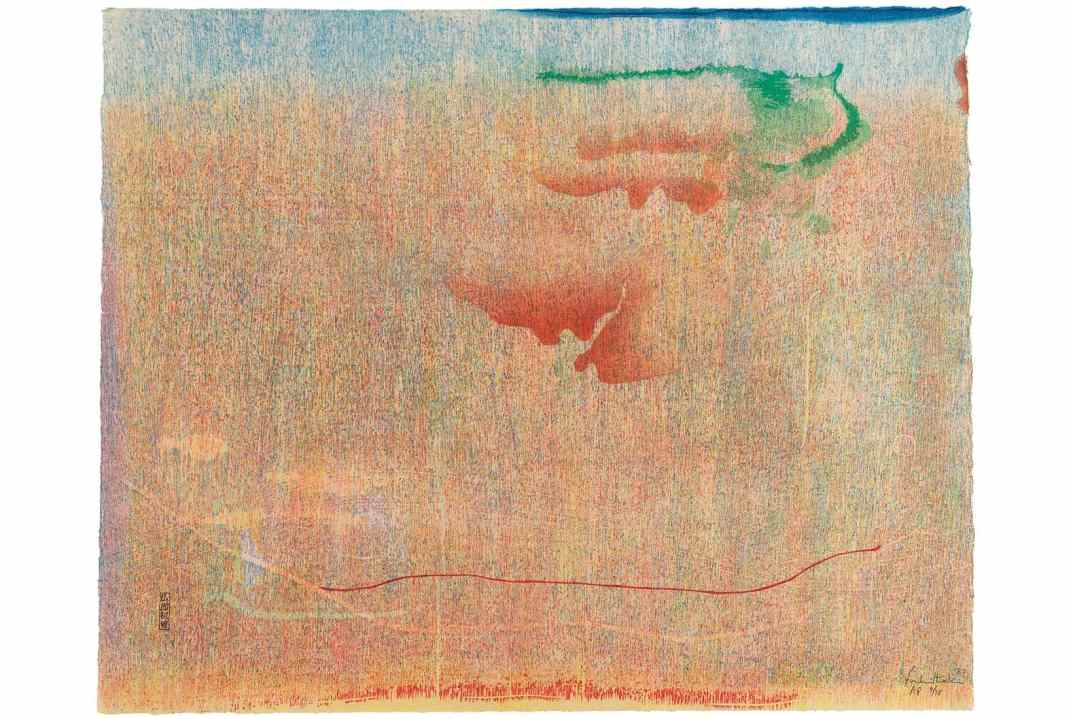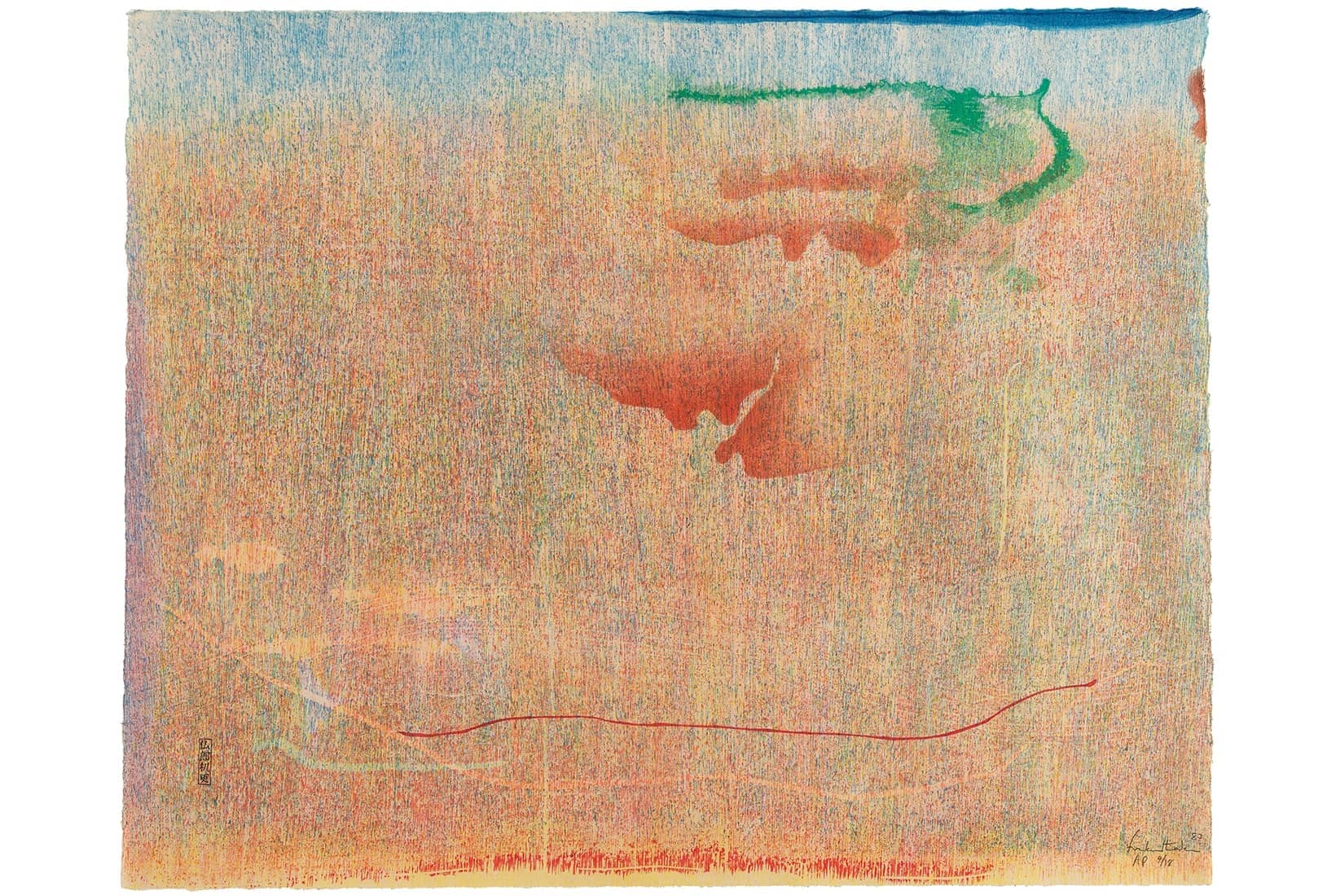In 1950 the 21-year-old painter Helen Frankenthaler, fresh out of college, went to an exhibition at New York’s Betty Parson’s Gallery that changed her whole perspective on art. ‘It was as if I suddenly went to a foreign country,’ she later recalled. ‘I wanted to live in this land; I had to live there, and master the language.’
The language was in fact American and the discoverer of the new land was Jackson Pollock. After seeing his drip paintings Frankenthaler ditched her easel and, too impatient to bother with primer, applied oil paint straight on to canvas on the floor. The oil sank into the canvas, isolating the pigment on the surface; when thinned with turps, the paint acquired the transparency of watercolour.
She scarified the paper surface with cheese scrapers, or applied paper pulp with a turkey baster and a comb
Frankenthaler christened it her ‘soak-stain’ method and it soon attracted the interest of other, male painters looking to move beyond abstract expressionism.








Comments
Join the debate for just $5 for 3 months
Be part of the conversation with other Spectator readers by getting your first three months for $5.
UNLOCK ACCESS Just $5 for 3 monthsAlready a subscriber? Log in